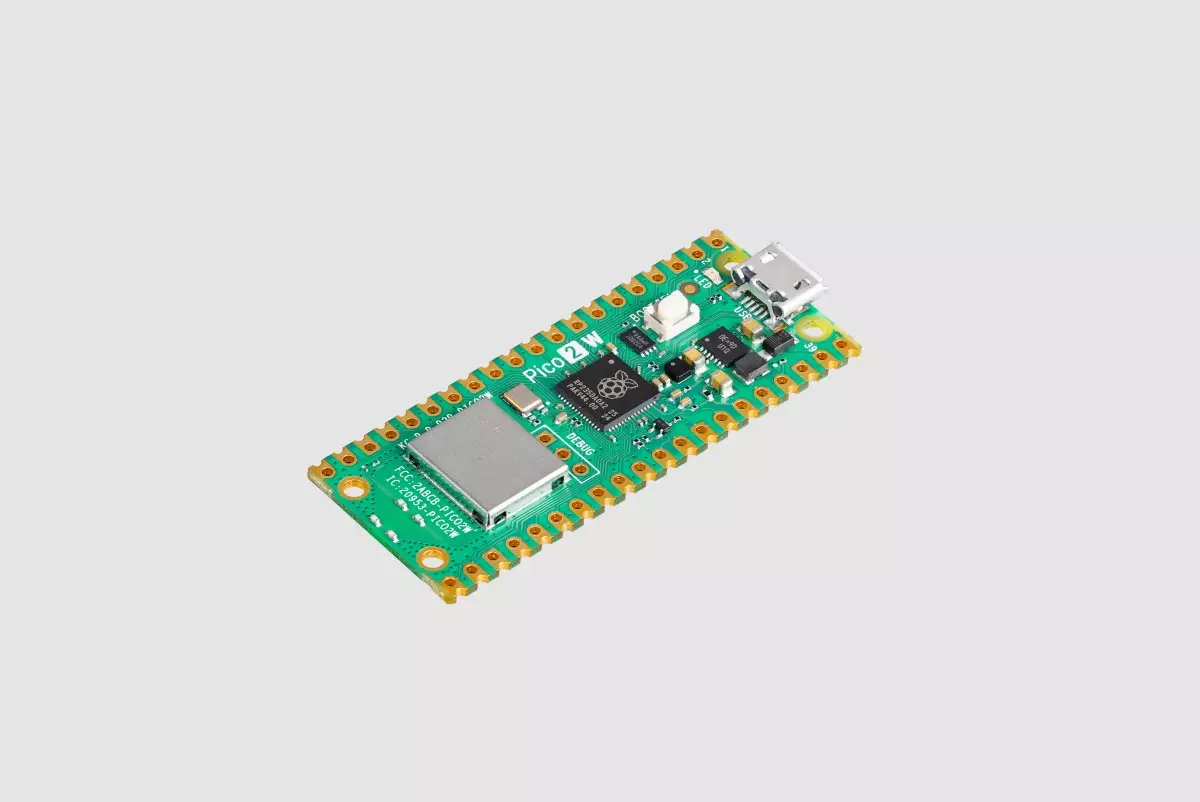In an age defined by technological innovation, microcontrollers are at the heart of numerous modern electronic projects. Among them, the Raspberry Pi Pico 2 W shines as a tiny yet powerful option for developers and hobbyists alike. Notably, it leverages the RP2350 microcontroller, built by Raspberry Pi, which boasts extensive documentation and support. These microcontrollers, though compact and inexpensive, are tailored for specific tasks—primarily controlling other devices and components, unlike their general-purpose counterparts, the traditional Raspberry Pi computers.
One of the defining features of the Pico 2 W is its design, which includes multiple input and output pins. These small, yellow holes around the board are essential for connecting various components, establishing a versatile platform for DIY electronics. Many enthusiasts start their journey with microcontrollers using a breadboard, allowing them to build and test circuits without soldering, making the learning curve less intimidating. As they refine their projects, soldering components is often the next step, solidifying their designs for long-term use.
The seamless integration of hardware and software sets this board apart, as developers can run code directly on the chip instead of relying on a traditional operating system. This eliminates the overhead associated with more complex platforms, rendering the Pico 2 W particularly efficient for small, dedicated tasks.
When it comes to programming, the Pico 2 W offers considerable flexibility, supporting C, C++, and MicroPython. The latter is a Python-inspired language uniquely designed for microcontroller environments, opening the doors for programmers familiar with Python to transition easily into embedded systems programming. This versatility allows for a much broader user base, from seasoned developers seeking powerful capabilities to newcomers looking for approachable programming languages.
The hardware configuration of the Pico 2 W is particularly impressive, featuring a dual-core and dual-architecture processor operating at 150MHz. Users can choose between two widely recognized Arm Cortex-M33 cores or opt for the open-hardware Hazard 3 RISC-V cores, reflecting the importance of customization in microcontroller development. While the Arm architecture is standard in microcontroller design, the inclusion of RISC-V cores caters to those who seek an alternative, fostering experimentation and innovation in their projects.
Regarding memory, the Pico 2 W comes equipped with 4 MB of on-board flash memory alongside 520 KB of on-chip SRAM from the RP2350. Although not boasting significant computing power, this microcontroller excels in executing tasks efficiently. The design philosophy behind the Pico 2 W underscores its role as a facilitator of controlled, specific functions rather than a powerhouse for heavy processing tasks, making it ideal for embedded systems and IoT devices, where energy efficiency is crucial.
Another noteworthy aspect of the Pico 2 W is its wireless capability. With support for Wi-Fi (2.4GHz 802.11n) and Bluetooth 5.2, it stands as a promising option for developers looking to create connected devices. However, the exclusion of 5GHz Wi-Fi support is a downside for some, as enhanced wireless performance would have expanded its usability. For those who do not require these wireless features, the Raspberry Pi Pico 2 is available without them, catering to cost-sensitive or certification-compliant projects.
Interestingly, the demand for Raspberry Pi products continues to grow, particularly in industrial sectors. The recent public listing of Raspberry Pi has highlighted that approximately 72% of its sales come from their industrial and embedded segments. This trend of integration indicates a promising future for the Pico 2 W and similar boards, as they become increasingly essential tools for manufacturing and technology applications.
The Raspberry Pi Pico 2 W presents an exciting opportunity for both hobbyists and professionals in the electronics field. Its combination of programmability, design flexibility, and wireless capabilities makes it an ideal choice for a wide range of projects, solidifying Raspberry Pi’s position at the forefront of microcontroller innovation. As technology continues to evolve, the advent of such platforms will no doubt drive further creativity and exploration in the realm of embedded systems.

